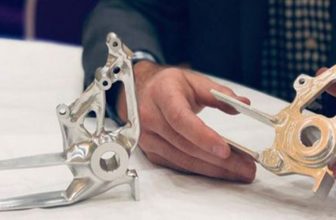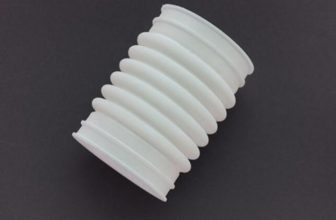
Selective laser sintering (SLS) is one of the widely used additive manufacturing-3D printing technologies. In recent years, SLS 3D printing technology has developed in terms of printing accuracy and speed.
For example, the German EOS company introduced FDR selective laser sintering technology that can realize the production of precise and robust parts. The surface of the parts manufactured by this technology has precise detail resolution and the minimum wall thickness is only 0.22 mm; compared with FDR technology, EOS also Introduced LaserProFusion selective laser sintering technology designed to maximize productivity. The exposure speed of this technology is not affected by the geometry of the components, and can be flexibly adjusted according to the requirements of mass production, shortening product development time, and can even replace injection molding in many applications forming.
Another direction of laser sintering technology innovation in selected districts is multi-material 3D printing. According to market research, the latest research paper “Inverted multi-material laser sintering” recently published by the Columbia University School of Engineering is to conduct multi-material 3D printing based on selective laser sintering. Through an inverted laser process, two different materials can be realized. 3D printing.
No need for large powder beds
The general working principle of the standard selective laser sintering technology is that the laser beam irradiates the powder in the cross-sectional profile of the part under computer control until the powder material is almost completely melted, and then cools and solidifies into a solid layer. Next, the next layer of powder is laid and the above process is repeated. Layer after layer of powder is laid and sintered until the desired three-dimensional solid part is formed.
This printing principle can be used to complete 3D printing of a single material, but it becomes very challenging if multiple different materials are used in one printing. This is because once the powder layer is laid in the printing bed, it is very challenging. Difficult to be removed or replaced with other materials. In addition, according to the Columbia University School of Engineering, in the standard selection laser sintering 3D printer, the remaining unfused material in the powder bed always “surrounds” the sintered area, and it cannot be seen until the part is taken out and the excess powder is removed after the printing is completed. , Which means that the printing failure may not be found before the printing is completed.
The research team adopted a new method of powder material sintering. In this method, the large powder bed in the standard selective laser sintering equipment is no longer needed. Instead, the printing platform places the transparent glass plate on a thin layer of plastic powder. On the material, the laser beam irradiates the powder from below to sinter a layer of powder onto the glass plate, and then if another different material needs to be printed, the glass plate is moved to another thin powder by the printing platform , The laser beam is still irradiated from below, and different materials are sintered to the surface of the upper layer of material. This process is repeated until the parts are printed.
In the research paper, the research team showed the prototype 3D printed by the above new selective laser sintering technology, including a single thermoplastic polyurethane (TPU) material sample and a multi-material sample composed of TPU and nylon (PA) materials . The TPU sample is 2.18 mm, divided into 50 layers, with an average printing layer thickness of 43.6 microns, and a multi-material sample with an average printing layer thickness of 71 microns. These samples demonstrate the feasibility of the new selective laser sintering process, and at the same time demonstrate the ability to press the steel plate against the glass plate during sintering to obtain a denser material.
Speaking of the application prospects of the technology, the researchers said that the technology has the potential to manufacture embedded circuits, electromechanical components and even robotic components. It may be the application of selective laser sintering additive manufacturing technology from manufacturing passive devices to manufacturing active components. The key to the device. In addition, the technology can also be extended to the field of gradient alloy mechanical parts manufacturing, such as manufacturing turbine blades, where one material is used to manufacture the core part and the other material is used to manufacture surface coatings. Researchers are now using this technology to test two applications of metal powder materials and plastic powder materials, aiming to apply the selective laser sintering process to a wider range of mechanical, electrical, and chemical performance parts manufacturing fields.
Rieview
The exploration of multi-material 3D printing based on selective laser sintering technology is not the first to appear. The European startup Aerosint has also developed a selective laser sintering process for two different materials, but the principle is different from the method adopted by the Columbia Engineering Institute. Aerosint uses a technology called “selective powder deposition”. This technology has also changed the powder spreading process in the standard selective laser sintering by depositing powder materials through a rotatable drum. During the printing process, The drum passes through the entire printing area, and each drum deposits one material. At least two drums are used to achieve multi-material deposition. Among the two different materials, one of the cheap powders is used as the support material.
As the research team of the Columbia University School of Engineering expanded the powder bed multi-material 3D printing technology to the field of metal multi-materials, Aerosint also applied this similar technology to the selected area laser melting metal 3D printing equipment, aiming to achieve bimetal hybrid 3D printing At the beginning of this year, Aerosint announced the use of multi-metal powder material deposition technology to print bimetal parts, the parts are made of 316L stainless steel and copper chromium zirconium (CuCrZr) mixed nesting. The EU Horizon 2020 innovation plan also promotes multi-material metal 3D printing technology. Members of the MULTI-FUN project funded by this technology hope to be able to 3D print many products that were impossible to manufacture before.





